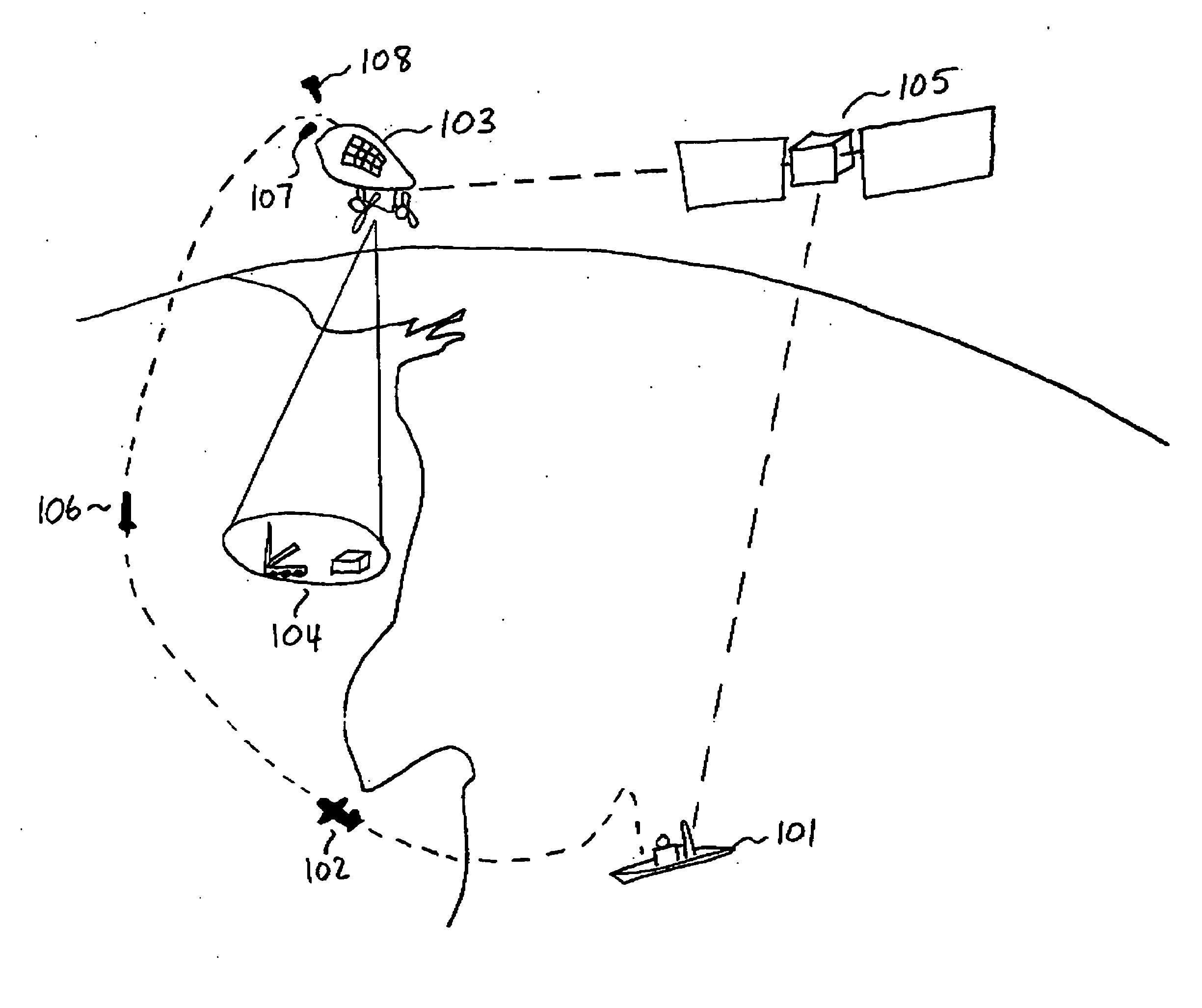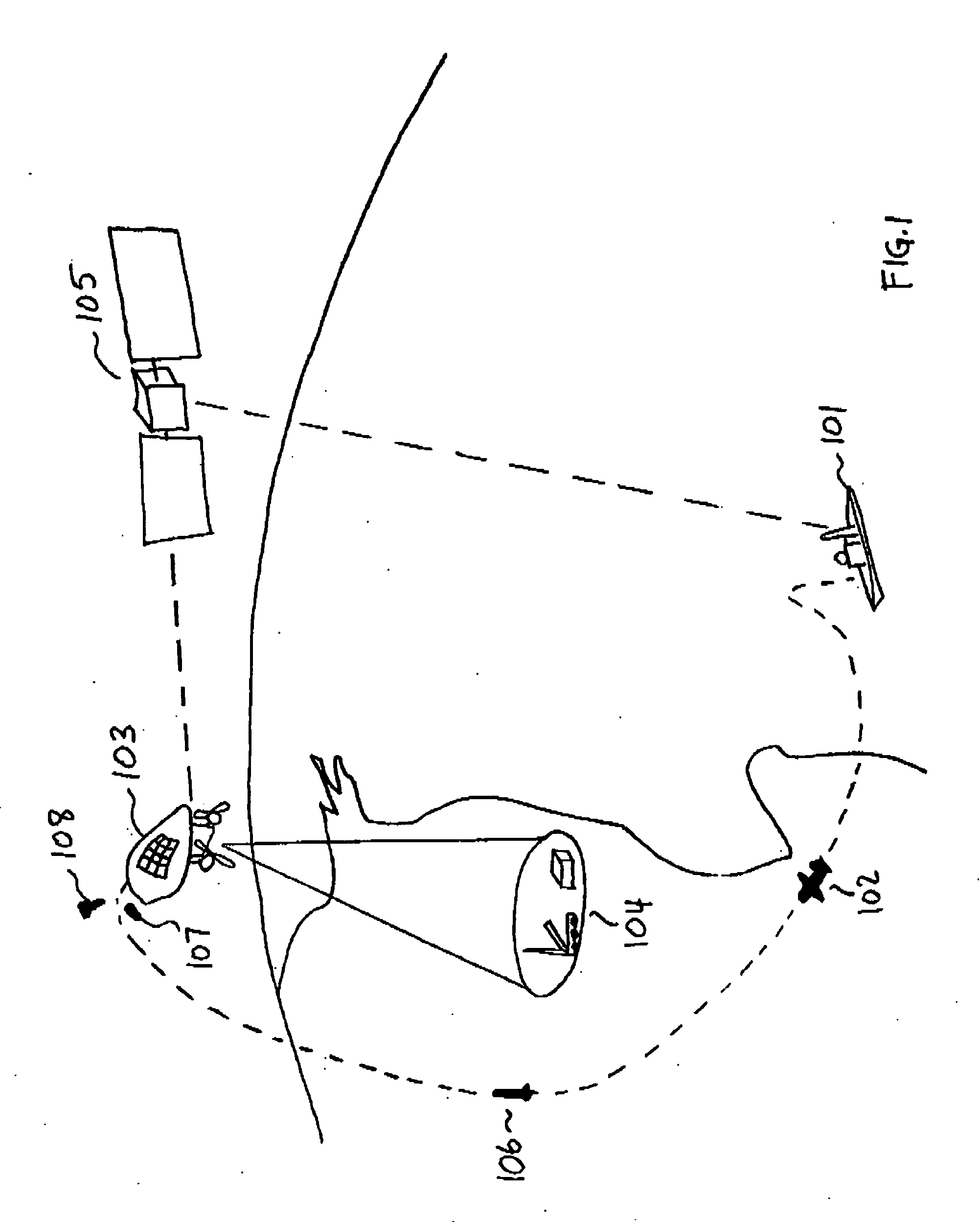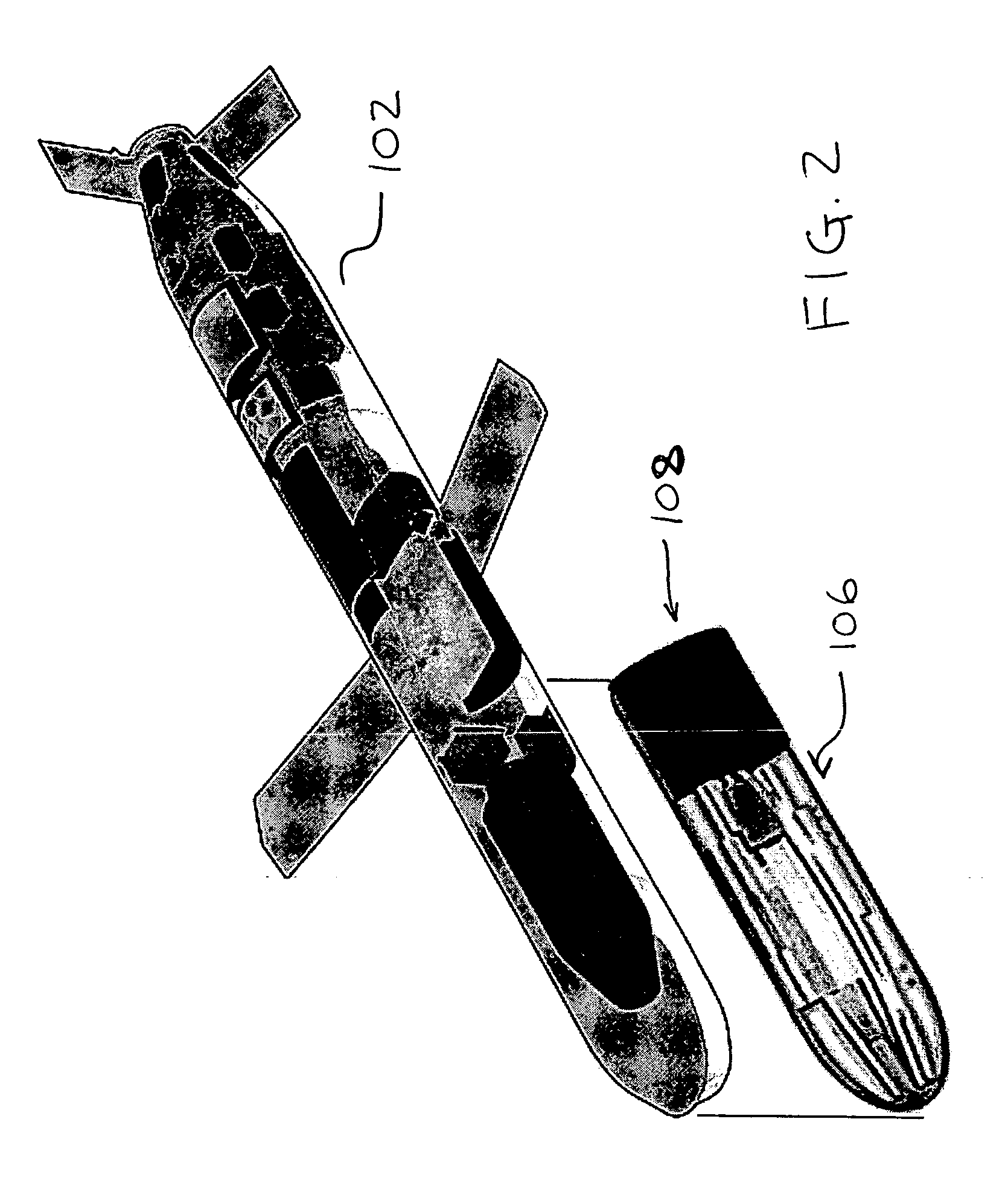High altitude reconnaissance vehicle
a reconnaissance vehicle and high-altitude technology, applied in the direction of launching/towing gear, wireless commuication services, energy-efficient board measures, etc., can solve the problems of 50 watts of power, system exposed, and failure to successfully fly under propeller power for station-keeping
- Summary
- Abstract
- Description
- Claims
- Application Information
AI Technical Summary
Benefits of technology
Problems solved by technology
Method used
Image
Examples
Embodiment Construction
[0019] Preferred embodiments of the present invention will be described herein below with reference to the accompanying drawings, wherein the same components or parts thereof will be represented with the same reference numerals or symbols to avoid any redundancy or repetition. In the following description, well-known functions or constructions are not described in detail since they would obscure the invention in unnecessary detail.
[0020] In general, many recognize the need for a long-duration, stable platform for reconnaissance and communications. A near-space platform occupies a niche between a UAV and a satellite. This type of platform shares the availability, ability to reconfigure, low-cost and rapid launch benefits of UAVs while having the ability to station-keep for extended periods, and provide a general invulnerability associated with high altitude satellites.
[0021] The novel, station keeping stratospheric vehicle (station-keeping inflatable platform or “HARVe” as used her...
PUM
 Login to View More
Login to View More Abstract
Description
Claims
Application Information
 Login to View More
Login to View More - R&D
- Intellectual Property
- Life Sciences
- Materials
- Tech Scout
- Unparalleled Data Quality
- Higher Quality Content
- 60% Fewer Hallucinations
Browse by: Latest US Patents, China's latest patents, Technical Efficacy Thesaurus, Application Domain, Technology Topic, Popular Technical Reports.
© 2025 PatSnap. All rights reserved.Legal|Privacy policy|Modern Slavery Act Transparency Statement|Sitemap|About US| Contact US: help@patsnap.com



